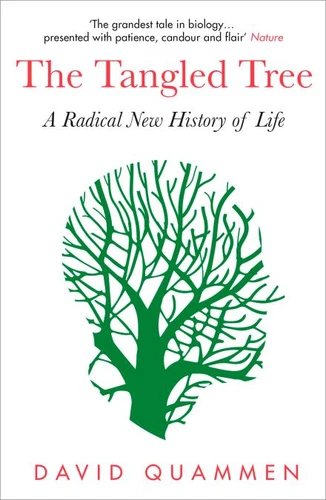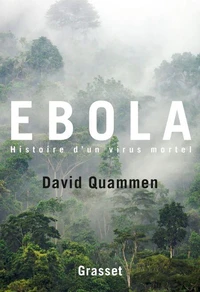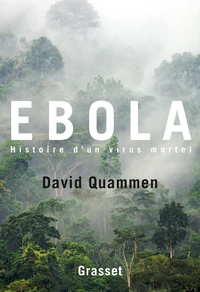The Tangled Tree. A Radical New History of Life
Par :Formats :
Disponible dans votre compte client Decitre ou Furet du Nord dès validation de votre commande. Le format ePub protégé est :
- Compatible avec une lecture sur My Vivlio (smartphone, tablette, ordinateur)
- Compatible avec une lecture sur liseuses Vivlio
- Pour les liseuses autres que Vivlio, vous devez utiliser le logiciel Adobe Digital Edition. Non compatible avec la lecture sur les liseuses Kindle, Remarkable et Sony
- Non compatible avec un achat hors France métropolitaine
 , qui est-ce ?
, qui est-ce ?Notre partenaire de plateforme de lecture numérique où vous retrouverez l'ensemble de vos ebooks gratuitement
Pour en savoir plus sur nos ebooks, consultez notre aide en ligne ici
- Nombre de pages480
- FormatePub
- ISBN978-0-00-831069-1
- EAN9780008310691
- Date de parution06/09/2018
- Protection num.Adobe DRM
- Infos supplémentairesepub
- ÉditeurWilliam Collins
Résumé
Longlisted for the National Book Award for Nonfiction and A New York Times Notable Book of 2018.
Our understanding of the 'tree of life', with powerful implications for human genetics, human health and our own human nature, has recently completely changed.
This book is about a new method of telling the story of life on earth - through molecular phylogenetics. It involves a fairly simple method - the reading of the deep history of life by looking at the variation in protein molecules found in living organisms.
For instance, we now know that roughly eight per cent of the human genome arrived not through traditional inheritance from directly ancestral forms, but sideways by viral infection. In The Tangled Tree, acclaimed science writer David Quammen chronicles these discoveries through the lives of the researchers who made them - such as Carl Woese, the most important little-known biologist of the twentieth century; Lynn Margulis, the notorious maverick whose wild ideas about 'mosaic' creatures proved to be true; and Tsutomu Wantanabe, who discovered that the scourge of antibiotic-resistant bacteria is a direct result of horizontal gene transfer, bringing the deep study of genome histories to bear on a global crisis in public health. Quammen explains how molecular studies of evolution have brought startling recognitions about the tangled tree of life - including where we humans fit into it.
Thanks to new technologies, we now have the ability to alter even our genetic composition - through sideways insertions, as nature has long been doing. The Tangled Tree is a brilliant exploration of our transformed understanding of evolution and of life's history itself.
For instance, we now know that roughly eight per cent of the human genome arrived not through traditional inheritance from directly ancestral forms, but sideways by viral infection. In The Tangled Tree, acclaimed science writer David Quammen chronicles these discoveries through the lives of the researchers who made them - such as Carl Woese, the most important little-known biologist of the twentieth century; Lynn Margulis, the notorious maverick whose wild ideas about 'mosaic' creatures proved to be true; and Tsutomu Wantanabe, who discovered that the scourge of antibiotic-resistant bacteria is a direct result of horizontal gene transfer, bringing the deep study of genome histories to bear on a global crisis in public health. Quammen explains how molecular studies of evolution have brought startling recognitions about the tangled tree of life - including where we humans fit into it.
Thanks to new technologies, we now have the ability to alter even our genetic composition - through sideways insertions, as nature has long been doing. The Tangled Tree is a brilliant exploration of our transformed understanding of evolution and of life's history itself.
Longlisted for the National Book Award for Nonfiction and A New York Times Notable Book of 2018.
Our understanding of the 'tree of life', with powerful implications for human genetics, human health and our own human nature, has recently completely changed.
This book is about a new method of telling the story of life on earth - through molecular phylogenetics. It involves a fairly simple method - the reading of the deep history of life by looking at the variation in protein molecules found in living organisms.
For instance, we now know that roughly eight per cent of the human genome arrived not through traditional inheritance from directly ancestral forms, but sideways by viral infection. In The Tangled Tree, acclaimed science writer David Quammen chronicles these discoveries through the lives of the researchers who made them - such as Carl Woese, the most important little-known biologist of the twentieth century; Lynn Margulis, the notorious maverick whose wild ideas about 'mosaic' creatures proved to be true; and Tsutomu Wantanabe, who discovered that the scourge of antibiotic-resistant bacteria is a direct result of horizontal gene transfer, bringing the deep study of genome histories to bear on a global crisis in public health. Quammen explains how molecular studies of evolution have brought startling recognitions about the tangled tree of life - including where we humans fit into it.
Thanks to new technologies, we now have the ability to alter even our genetic composition - through sideways insertions, as nature has long been doing. The Tangled Tree is a brilliant exploration of our transformed understanding of evolution and of life's history itself.
For instance, we now know that roughly eight per cent of the human genome arrived not through traditional inheritance from directly ancestral forms, but sideways by viral infection. In The Tangled Tree, acclaimed science writer David Quammen chronicles these discoveries through the lives of the researchers who made them - such as Carl Woese, the most important little-known biologist of the twentieth century; Lynn Margulis, the notorious maverick whose wild ideas about 'mosaic' creatures proved to be true; and Tsutomu Wantanabe, who discovered that the scourge of antibiotic-resistant bacteria is a direct result of horizontal gene transfer, bringing the deep study of genome histories to bear on a global crisis in public health. Quammen explains how molecular studies of evolution have brought startling recognitions about the tangled tree of life - including where we humans fit into it.
Thanks to new technologies, we now have the ability to alter even our genetic composition - through sideways insertions, as nature has long been doing. The Tangled Tree is a brilliant exploration of our transformed understanding of evolution and of life's history itself.












